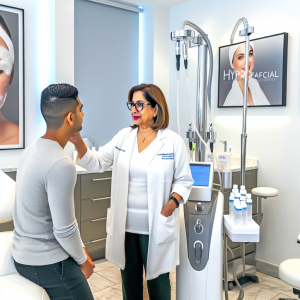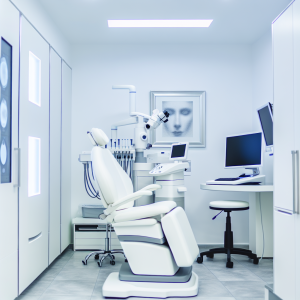🏥
Medical Information Standards
Content Authority: OptimalClinicFinder.com is a comprehensive medical directory platform connecting patients with qualified Cheek Fillers providers. Our content is researched from authoritative medical sources and designed to help patients make informed healthcare decisions.
How Dermal Fillers Work: Clinical Mechanism and Applications
Dermal fillers function by utilizing hyaluronic acid, a naturally occurring glycosaminoglycan that maintains skin hydration and volume. When injected into targeted facial areas, these cross-linked hyaluronic acid gels integrate with existing tissue to restore lost volume, smooth wrinkles, and enhance facial contours. The cross-linking process, which differs between Juvederm and Restylane, determines the filler’s longevity, consistency, and integration properties.
The treatment mechanism involves strategic placement of filler material in specific tissue planes to achieve desired aesthetic outcomes. Superficial injections address fine lines and skin quality, while deeper placement restores structural volume loss. The hyaluronic acid molecules attract and bind water molecules, creating immediate volume enhancement that continues to improve over several weeks as the product integrates with surrounding tissues.
💡
Did You Know?
Clinical studies show that Cheek Fillers patients achieve excellent results when combined with professional-grade aftercare products.
Clinical Research and Evidence Base
The clinical development of both Juvederm and Restylane involved multiple large-scale randomized controlled trials spanning over two decades. Juvederm’s pivotal studies enrolled over 5,000 participants across diverse demographics, demonstrating significant improvements in wrinkle severity scores and patient satisfaction ratings lasting 12-24 months depending on product formulation and treatment area.
Restylane’s clinical program included similar large-scale trials with over 4,500 participants, showing consistent efficacy across different facial regions with duration ranging from 9-18 months. Comparative studies reveal that while both products achieve excellent results, Juvederm’s Vycross technology demonstrates slightly longer duration in most patients, while Restylane’s NASHA technology offers more predictable integration and natural feel. Long-term safety data from both manufacturers confirms minimal long-term complications when administered by trained professionals.
Juvederm Vs Restylane: Key Differences and Clinical Applications
The primary differences between Juvederm and Restylane stem from their manufacturing processes and molecular characteristics. Juvederm utilizes Vycross technology, creating a smoother gel consistency that flows easily during injection and provides uniform distribution. This technology results in longer-lasting results, with most formulations maintaining effectiveness for 12-18 months, and some premium products lasting up to 24 months.
Restylane employs NASHA (Non-Animal Stabilized Hyaluronic Acid) technology, producing a more granular gel structure that maintains its shape better after injection. This characteristic makes Restylane particularly suitable for precise contouring and areas requiring structural support. The more cohesive nature of Restylane allows for better projection and definition, making it ideal for cheek augmentation and jawline enhancement.
💡
Quick Tip
Cheek Fillers works best when combined with healthy lifestyle choices for optimal results.
Treatment applications vary based on these fundamental differences. Juvederm excels in areas requiring smooth, natural-looking volume restoration, such as nasolabial folds, marionette lines, and lip enhancement. Its smooth consistency allows for seamless blending with natural tissues, creating subtle, natural-looking results. Restylane performs exceptionally well for structural applications including cheek augmentation, chin enhancement, and areas requiring precise contouring and definition.
Safety Profile and Risk Management
The safety profiles of both Juvederm and Restylane are well-established through extensive clinical use and post-market surveillance. Common side effects include temporary swelling, bruising, redness, and tenderness at injection sites, typically resolving within 7-14 days. These effects are generally mild and can be minimized through proper injection technique, patient preparation, and post-treatment care.
Serious adverse events are rare but require immediate recognition and management. Vascular occlusion, occurring in less than 0.01% of treatments, represents the most serious potential complication and requires emergency intervention with hyaluronidase and appropriate medical management. Other rare complications include granuloma formation, persistent swelling, and asymmetry requiring corrective treatment.
Risk factors for complications include previous facial surgery, certain medical conditions affecting healing, and concurrent use of blood-thinning medications. Patient selection and thorough consultation significantly reduce complication risks. Both products can be dissolved using hyaluronidase if needed, providing an important safety mechanism for managing complications or unsatisfactory results.
Cost Analysis and Value Considerations
The cost of dermal filler treatment varies based on multiple factors including geographic location, provider expertise, product selection, and treatment complexity. Average costs range from $500-1,200 per syringe, with premium formulations commanding higher prices. Most patients require 1-3 syringes per treatment session depending on treatment goals and areas addressed.
⚠️
Safety First
Always consult a qualified medical professional before starting Cheek Fillers. Results vary by individual.
✓
Why Choose Cheek Fillers?
●
Clinically proven
●
FDA approved
●
Minimal downtime
●
Long-lasting
When comparing value between products, longevity becomes a crucial factor. While Juvederm may cost slightly more initially, its longer duration can provide better cost-effectiveness over time. Restylane’s lower upfront cost may appeal to budget-conscious patients, though more frequent touch-ups may be needed. Insurance typically doesn’t cover cosmetic dermal filler treatments, making cost considerations important for treatment planning.
Hidden costs include consultation fees, touch-up treatments, and potential complication management. Choosing experienced providers may involve higher initial costs but typically results in better outcomes, fewer complications, and greater long-term satisfaction. Many practices offer package pricing for multiple areas or maintenance treatments, improving overall value.
Provider Selection and Treatment Excellence
Selecting an experienced injector represents the most critical factor in achieving optimal results with either Juvederm or Restylane. Board certification in dermatology or plastic surgery provides foundational training, but specific experience with injectable treatments and ongoing education in advanced techniques are equally important. Providers should demonstrate thorough knowledge of facial anatomy, injection techniques, and complication management.
Evaluation criteria for provider selection include professional credentials, before-and-after photography of similar cases, patient testimonials, and consultation quality. The best providers conduct thorough consultations, explain treatment options clearly, set realistic expectations, and prioritize patient safety over sales volume. They should also have immediate access to hyaluronidase and emergency protocols for managing complications.
Treatment excellence requires not only technical skill but also artistic vision and understanding of individual facial characteristics. The best results come from providers who view facial enhancement as both medical treatment and artistic endeavor, customizing approaches based on individual anatomy, aesthetic goals, and lifestyle considerations. Ongoing relationships with experienced providers often yield the best long-term results through consistent care and treatment refinement.
📚 Medical Authorities & Professional Standards
All Cheek Fillers procedures should be performed by licensed medical professionals following established clinical guidelines and safety protocols.
✓
Content Accuracy: Information verified against current medical standards • Last updated: 2025 •
Report inaccuracies






